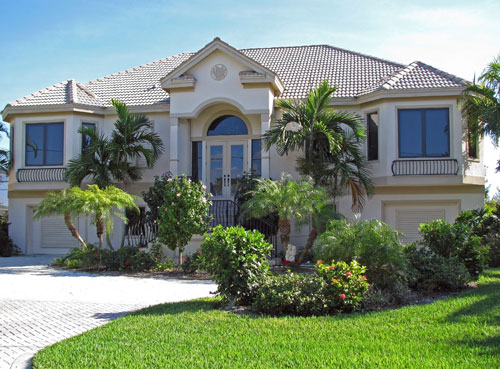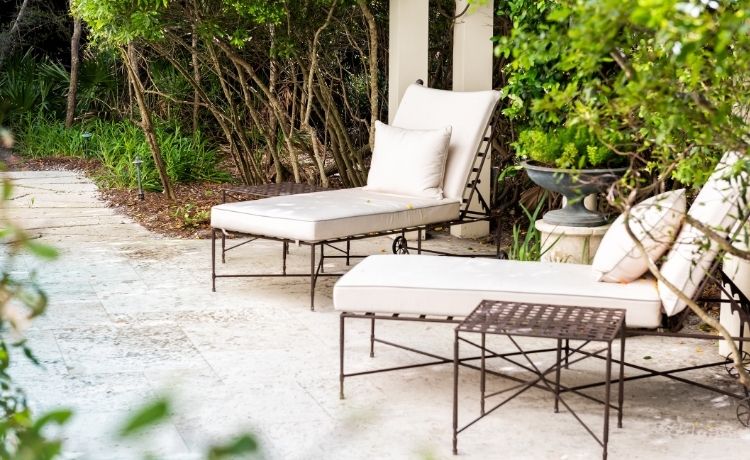Get your property up to par in 2019 thanks to advice from the pros…
INSIDE: Keep and Toss
Keep
What brings you joy. Love it or hate it, thanks to her new Netflix show, Marie Kondo has taken over the home improvement space with her much-debated KonMari method, which advises thanking your possessions for their service and folding clothing in her very-specific (and very compact) style.
Toss
Just about everything. Clean and organized spaces are just the beginning as homeowners embrace function and style, finding a place for everything and only investing in pieces that make sense for their lives.
Keep
The comfort. Forget stiff chairs and scratchy rugs, designers are leaning in to comfort, pushing homeowners to spend money on lucious fabrics and family-friendly living spaces.
Toss
The internet. The novelty has worn off for many, says DIGS owner Leslie Matus, who encourages her clients to think local. “Buying online is not always the most economical, due to shipping, quality control and cost issues,” says Matus. “Sometimes the 20 percent is worth more than the headaches.”
Keep
Color. Embracing the beauty of everything from jewel tones to feminine pastels means infusing homes with a kick of color. The less adventurous can invest in a few new luxury throw pillows or planters, while the brave can layer paints, fabrics and rugs for more drama. They might serve your aesthetic and functional purposes!
Toss
Grey. It had to end sometime. Designers are moving away from this favorite neutral toward warmer neutrals like taupe and black and white accents.
Keep
Light-colored floors. From birch and white to light oak, homeowners want an open, airy feel to flow through the entire house.
Toss
Boho accessories. While natural elements are here to stay (for now) the tapestries, fiber art and faux succulents are a few to let go.

OUTSIDE: Q&A With Harvey Bernstein, Horticulturist at Pinecrest Gardens
What are some easy options for people looking to add to their yards when it comes to plants or trees?
It’s less costly to work with the site environment than attempting to plant a garden that needs special care to thrive, otherwise you may end up planting trees that are a nuisance and ultimately need a professional tree felling service to get rid of them. Most developed areas in Miami-Dade County have been built on former pinelands, hammocks, drained sawgrass prairies, or filled mangrove swamps. Typically, a fill layer of soil has been placed over limestone.
Using plants that can tolerate our low-fertility, alkaline soil conditions, seasonal rainfall patterns, and windy periods can make local gardening much easier. There are many native plants that are superbly adapted to garden use and bring the added benefits of providing food and shelter to birds, butterflies, and native pollinating insects.
It’s also important to maintain your landscape like any
We often desire fast-growing trees that are inexpensive and fill in quickly, but it’s best selecting other species that are appropriately scaled to the landscaping design when mature. We get a local tree cutting service because we don’t want trees that will grow too big, crowding out other plants and even being a property hazard in storms.
What fruit trees thrive in Pinecrest/Gables?
Avocados and mangos are old favorites that do particularly well in our area, and taste great. New dwarf varieties of mangoes are much easier for the typical homeowner to manage and have excellent fruit. There are many different banana varieties that are much more flavorful than store bought varieties; they are a quickly maturing fruit that are very easy to grow.
What is the best way to figure out where to plant your trees/plants?
Take into account the light and water needs of the individual species. Plant those that need filtered light under a sun-loving tree. Plant fragile plants with little wind resistance in the protection of other plants and structures. If you live along the coast, plant salt-resistant species. Make sure that water-dependent types are planted with an effective irrigation system in place or within reach of a hose.
The internet can be overwhelming for amateur gardeners and horticulturists! Do you have any favorite websites or apps for information/guidance?
The Cooperative Extension Service, part of the University of Florida’s Institute of Food and Agricultural Sciences, is a tremendous resource. Local and national plant specialty societies can have websites of varying usefulness, but membership provides a doorway into entire networks of plant lovers and highly experienced experts. The Connect to Protect network is a way to restore native plant habitats to our home gardens.
What are your top 3 tips for working toward a green thumb?
Become a volunteer at a local garden, such as Pinecrest Gardens, Fairchild Tropical Botanic Garden, or the Kampong.
Become certified as a Florida Master Gardener (contact the local Cooperative Extension Service office in Homestead).
Read, read, read postings online in various forums such as Dave’s Garden and Palmtalk. Search out information at floridayards.org and The Institute for Regional Conservation.






 Deering Estate
Deering Estate
 Massage Envy South Miami
Massage Envy South Miami
 Calla Blow Dry
Calla Blow Dry
 My Derma Clinic
My Derma Clinic
 Sushi Maki
Sushi Maki
 Sports Grill
Sports Grill
 The Healthy Kitchen
The Healthy Kitchen
 Golden Rule Seafood
Golden Rule Seafood
 Malanga Cuban Café
Malanga Cuban Café

 Kathleen Ballard
Kathleen Ballard
 Panter, Panter & Sampedro
Panter, Panter & Sampedro
 Vintage Liquors
Vintage Liquors
 The Dog from Ipanema
The Dog from Ipanema
 Rubinstein Family Chiropractic
Rubinstein Family Chiropractic
 Your Pet’s Best
Your Pet’s Best
 Indigo Republic
Indigo Republic




 ATR Luxury Homes
ATR Luxury Homes


 2112 Design Studio
2112 Design Studio
 Hamilton Fox & Company
Hamilton Fox & Company
 Creative Design Services
Creative Design Services
 Best Pest Professionals
Best Pest Professionals
 HD Tree Services
HD Tree Services
 Trinity Air Conditioning Company
Trinity Air Conditioning Company
 Cisca Construction & Development
Cisca Construction & Development
 Mosquito Joe
Mosquito Joe
 Cutler Bay Solar Solutions
Cutler Bay Solar Solutions


 Miami Royal Ballet & Dance
Miami Royal Ballet & Dance
 Christopher Columbus
Christopher Columbus
 Pineview Preschools
Pineview Preschools
 Westminster
Westminster
 Carrollton
Carrollton
 Lil’ Jungle
Lil’ Jungle
 Frost Science Museum
Frost Science Museum
 Palmer Trinity School
Palmer Trinity School
 South Florida Music
South Florida Music
 Pinecrest Orthodontics
Pinecrest Orthodontics
 Dr. Bob Pediatric Dentist
Dr. Bob Pediatric Dentist
 d.pediatrics
d.pediatrics
 South Miami Women’s Health
South Miami Women’s Health

 The Spot Barbershop
The Spot Barbershop
 My Derma Clinic
My Derma Clinic




 Miami Dance Project
Miami Dance Project

 Rubinstein Family Chiropractic
Rubinstein Family Chiropractic
 Indigo Republic
Indigo Republic

 Safes Universe
Safes Universe
 Vintage Liquors
Vintage Liquors
 Evenings Delight
Evenings Delight





 Atchana’s Homegrown Thai
Atchana’s Homegrown Thai
 Baptist Health South Florida
Baptist Health South Florida

 Laser Eye Center of Miami
Laser Eye Center of Miami
 Visiting Angels
Visiting Angels
 OpusCare of South Florida
OpusCare of South Florida

 Your Pet’s Best
Your Pet’s Best





 HD Tree Services
HD Tree Services
 Hamilton Fox & Company
Hamilton Fox & Company


 Creative Design Services
Creative Design Services